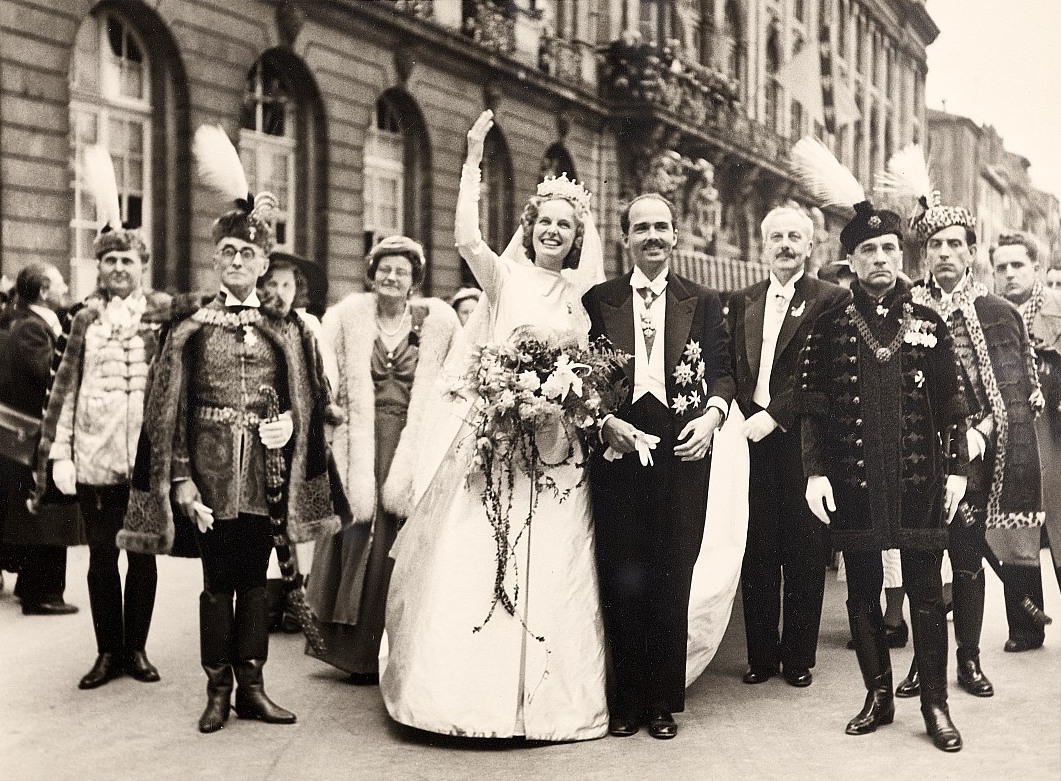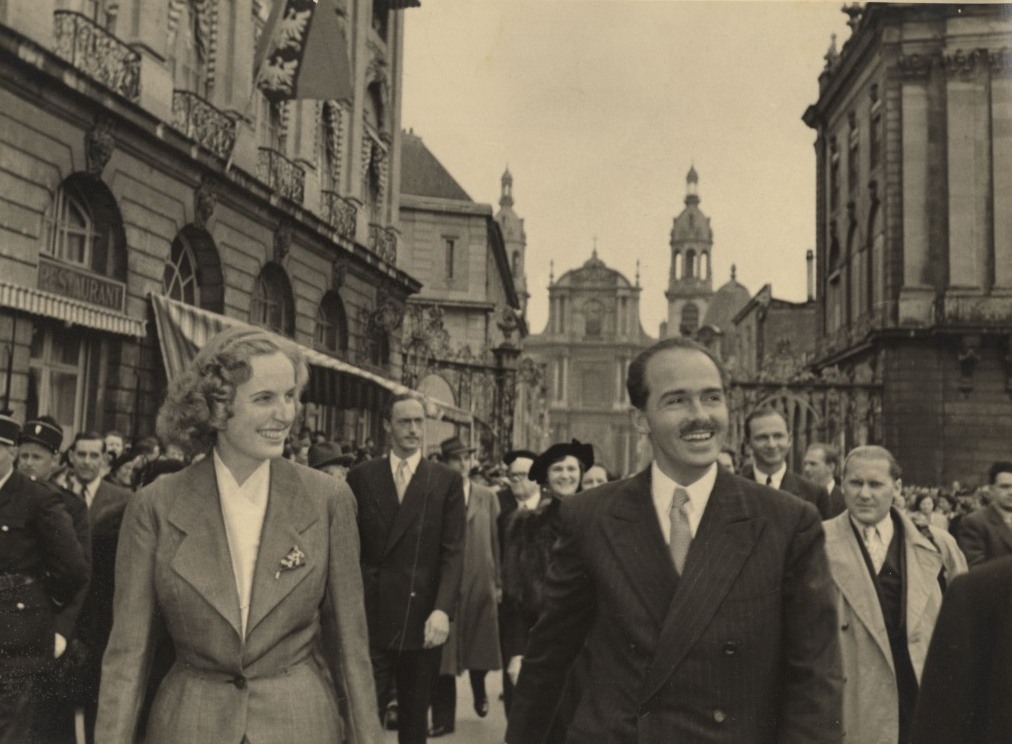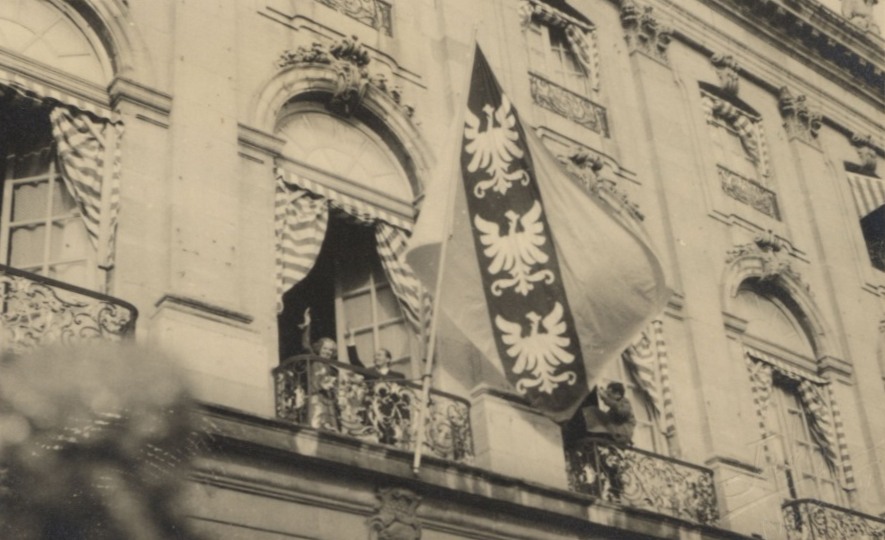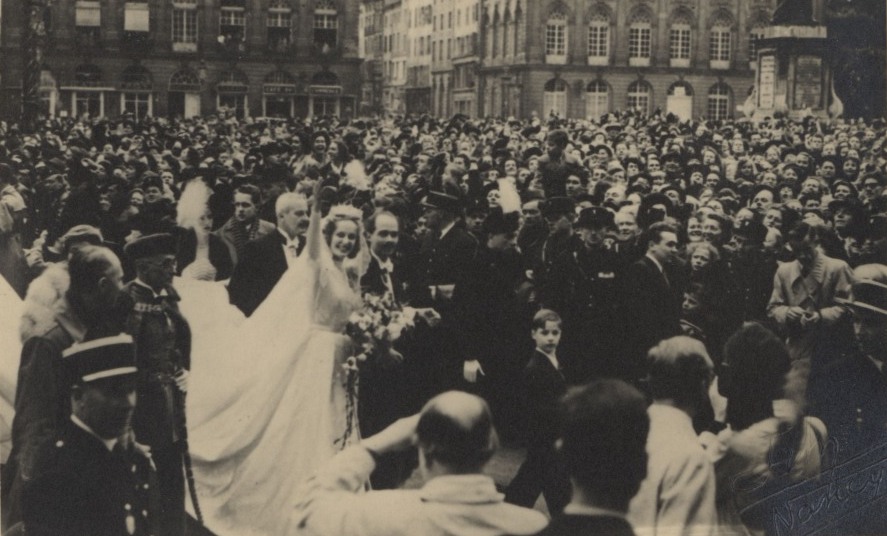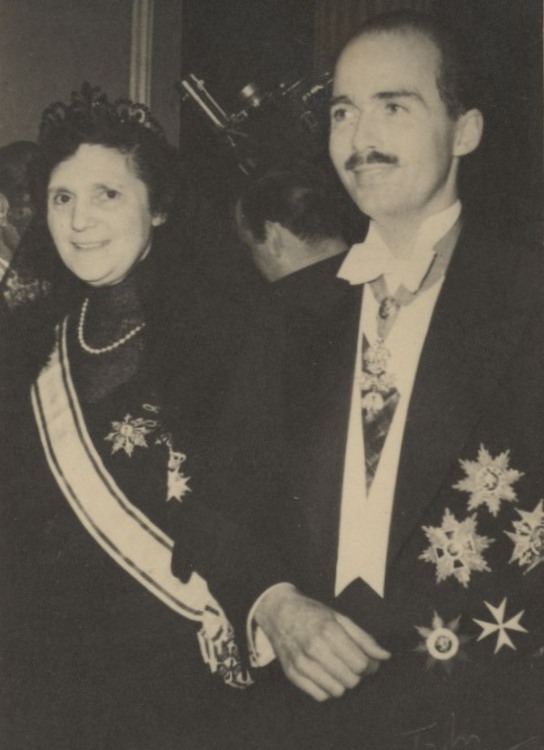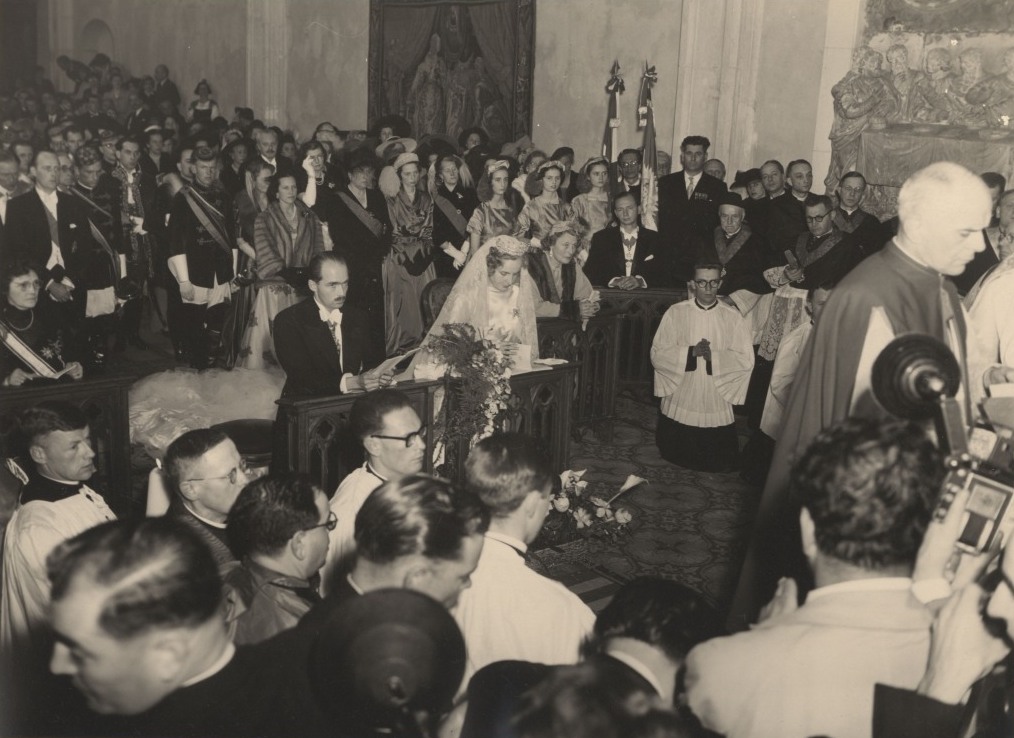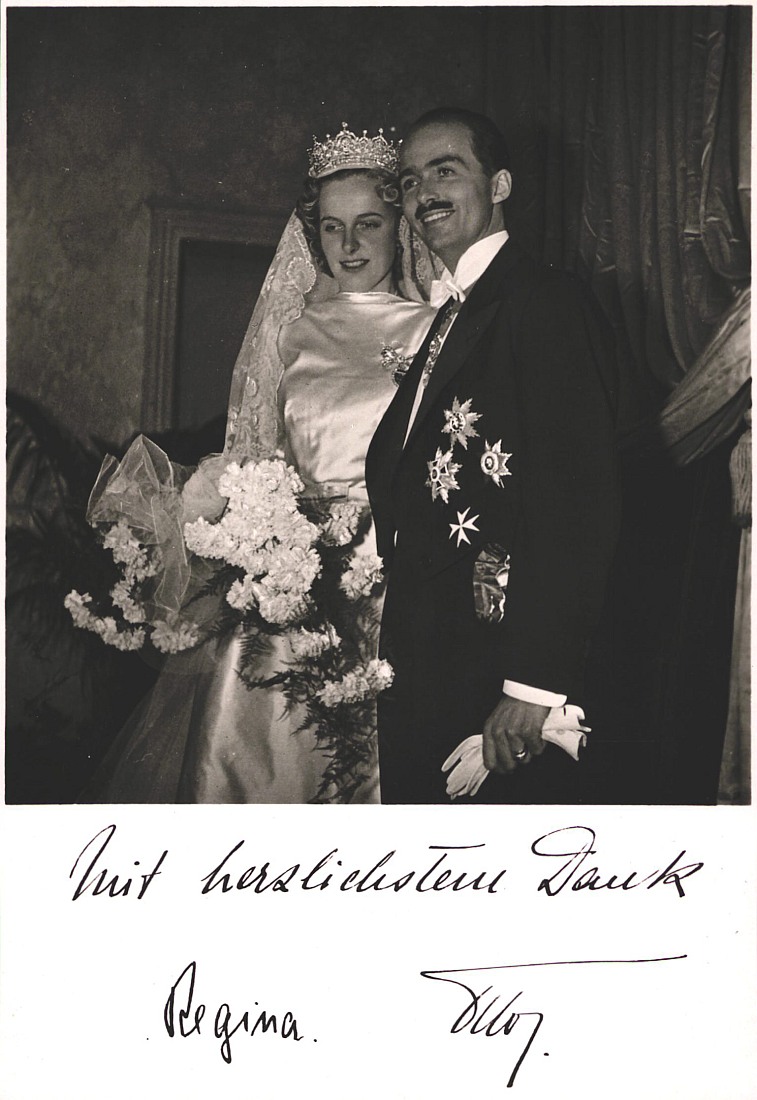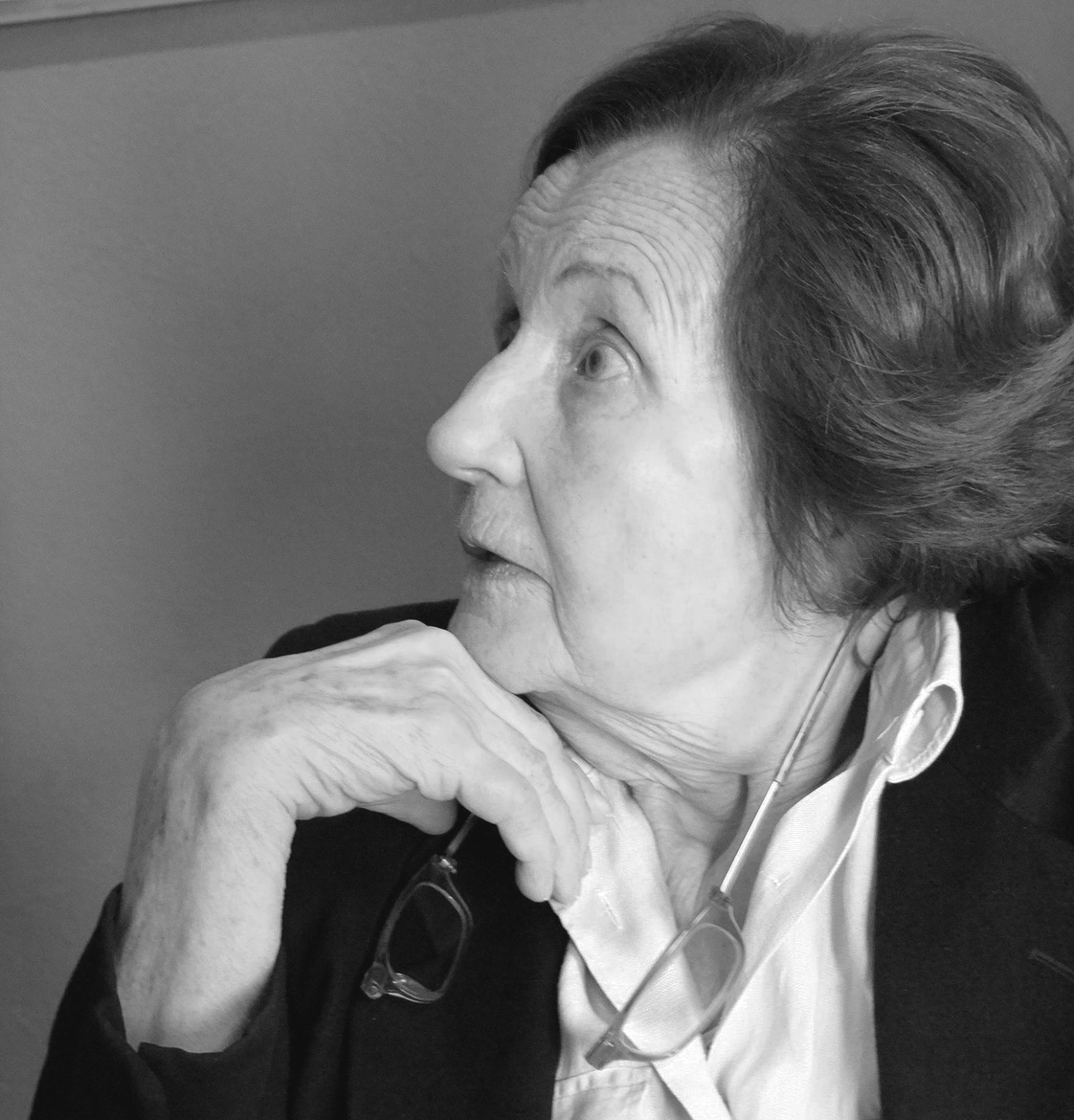How they met
The hopes of Otto von Habsburg’s return home were soon dashed after the Second Austrian Republic restored the Habsburg Law to constitutional status in 1945. Unwelcome in Soviet-controlled Hungary, the Archduke, through the intervention of a friend, finally obtained a passport from the Prince of Monaco, which at least allowed him to travel in the late 1940s. In 1948, he set off on an international tour with his younger brother, Robert. His political lectures gave Otto a worldwide reputation and some financial security, which in his late thirties gave him the existential stability he needed to start a family.
To facilitate his decision, his mother, Queen Zita, took great care to compile a list of potential brides of suitable age and rank. With these guidelines in his pocket, her son walked the world, now thinking of marriage. During his stay in Paris, he was approached by the former foreign minister of the Lakatos government, Gustave Hennyey, who asked him to help interpret between the authorities and the Hungarians in refugee camps in Germany. Otto, accepting the invitation, travelled to Germany in the summer of 1950.
Regina Saxe-Meiningen was born in 1925 in Würzburg, the daughter of Prince George Saxe-Meiningen and Klara-Marie Countess of Korff. By the summer of 1950, despite her young age, she had endured many hardships: as a descendant of the rulers of the Duchy of Saxe-Meiningen, which had fallen under Soviet influence in the province of Thuringia as a result of the war, she and her family were stripped of all their possessions. His father was sent to a Soviet prison camp in 1945, from which he never returned; his brother was killed on the Western Front in 1940, and he and his mother fled to West Germany after the war.
In 1949, she started working as a social worker in a camp for Hungarian refugees in Munich, but due to her lack of Hungarian language skills, she could barely make herself understood. In the summer of 1950, she was trying to communicate with a Hungarian refugee when a sympathetic, dark-haired young man came to her aid. This is how Otto von Habsburg met Princess Regina of Saxe-Meiningen[1], who was not even on his mother’s list…
After they met, as Otto later recalled, ‘everything happened very quickly’. Nothing better illustrated Otto’s intentions and the genuineness of their feelings than that they met so many times in a very short period, and that Otto – despite not being a fan of music – even accompanied Regina to concerts.
Six months later, on Christmas Eve, they got engaged, and the wedding took place on May 10 the following year in Nancy, France.[2]
The wedding
The ceremony was conducted with the most lavish royal pomp and ceremony, but only symbolically, as they were both deprived of their rank and fortune and living far from their homeland. By 1951, the Habsburg dynasty’s real political influence had long since been lost, yet tens of thousands of people from all over the former Austro-Hungarian Empire came to witness the marriage of Otto von Habsburg and Princess Regina.
The events of the big day began at 10 a.m. in the Town Hall. The French and Lorraine flags were flown on the façade of the building, while inside the ceremonial hall the flags of the House of Habsburg, Lorraine and Saxe-Meiningen, alongside the French tricolour, served as the historical backdrop to the wedding. The civil ceremony was conducted by the Mayor, Lionel Pèlerine.
|
What do wedding dresses say? The newlyweds were also royal in appearance, not only because of the significance of their regalia, but also because of the historical significance of their accessories. Regina’s wedding dress was chosen with Otto in Paris, based on drawings by French designer Jean Désses. According to a contemporary press account, the satin from which the dress was created was made on a special loom because of its special dimensions, as Princess Regina’s dress was seven metres long and three metres wide. The unusual gown was held by three princesses at the entrance and six bridesmaids at the exit. The veil was made in the 18th century for Maria Theresa’s daughter, Maria Christina, on the occasion of her marriage to Elector Albert von Sachsen-Teschen, and the lace veil was embroidered with the coats of arms of both families. The relic was discovered by Otto von Habsburg’s uncle, Prince Xavier of Bourbon-Parmae, in his castle in Bost, and was presented to Regina as a token of his affection. Her tiara was a wedding present from Queen Zita, who received it from Franz Joseph and wore it first on her wedding day in 1911. The special jewellery featured a band of five diamond-encrusted hearts interlaced with scrolls and leaves. The press of the time did not make much mention of the brooch that adorned the dress of Archduchess Regina, but some photographs show the young bride wearing the Order of the Star Cross. Members of the Order were only married or widowed noblewomen, headed by the so-called Supreme Patroness – until 1951, none other than Queen Zita. The medal was usually worn on a women’s ribbon made of black silk, but it was sometimes placed on a diamond-encrusted bow and worn over the heart. Queen Zita wore it in this way, and it was most probably presented to Regina on her wedding day, as the Archduchess had held the title of patroness since 1951. The historical reminiscences were also reinforced by Regina’s bridal bouquet, the myrtle flowers of which came from the gardens of Schönbrunn Palace and were transported from there to Nancy. Otto von Habsburg appeared in a traditional outfit, wearing a black tailcoat, and his orders included the Grand Crosses of the Order of the Golden Fleece, the Imperial Order of Leopold of Austria, the Royal Order of St Stephen of Hungary, the Order of the Golden Knight of Luxembourg, and the Order of Charles I of Spain.
|
As they stepped out of the gates of the Town Hall, the rainy weather turned unexpectedly clear, and the Archduke and Archduchess marched in sunshine to the Minorité Church of Les Cordeliers. Shouts of “Hooray!”, “Hoch!”, “Zivio!”, “Nazdar!” and “Vive les princes!” greeted them.
On arriving at the church, they were met by more than twenty clergy waiting for them, including Marc-Armand Lallier, Bishop of Nancy, and Mgr. Joseph Zagon, the Papal Prelate who celebrated Mass as the Pope’s official delegate. In his homily, he expressed his sympathy for the sad childhood of the two young people, praised their deep, unshakeable faith and stressed the sacrifices made by both their families for Christianity. Pope Pius XII also sent his best wishes for the occasion:
“Soon (…) His Imperial and Royal Highness will marry Princess Regina of Saxe-Meiningen. We cannot pass by this happy event without sharing their joy and expressing our congratulations. Our love and filial piety so wish. We pray to the eternal and loving Father to keep them faithful to their predecessors, and to grant them a long and peaceful life, rich in work and merit. This we wish, and therefore we pray with all our hearts, and to you, our dear son, we give our apostolic blessing on your spouse and on your whole household.”
At the end of the Mass, the Austrian imperial anthem was sung, as well as the Hungarian and Czech anthems, and the engaged couple went to the altar steps and knelt on brocade cushions filled with Austrian soil, prepared by Austrian women, to receive the blessing.[4]
The wedding ceremony was followed by a reception, after which the newlyweds set off for Contrexéville, the first stop on their honeymoon.
Wedding documents in our collection
The collection of the Otto von Habsburg Foundation holds a wealth of material relating to the wedding: newspaper articles, letters, and photographs. Many press publications, such as the Österreichische Nachrichten and the Salzburger Nachrichten, contain details of the wedding procession and interesting facts about the events. From these sources we learn that Otto von Habsburg’s brothers and sisters played a major role in the organisation: Prince Robert helped with the preparations and Princess Adelheid set up a room in Paris to deal with the constant flow of congratulatory letters and the arrangement of wedding gifts.
The material gathered by the family was organised in folders, in the form of congratulations, letters and postcards. Among the postcards is a special greeting card decorated with Edelweiss and other pressed flowers, which is still in good condition. In most cases, along with the letters, a letter of reply sent on behalf of the newlyweds in Hungarian, German or French is also attached.
The Crown Prince and the princess’s engagement was for life, their earthly marriage ending with Regina’s death in 2010.
The wedding gifts were kept separately, and a record was kept of who gave what. The lists included clothes, wine, cigarette cases; from Hungary gold-embroidered napkins and a bag with pearls. Among the more valuable gifts, a unique one was a white lace box belonging to Franz Joseph’s daughter Maria Valeria, given from an admirer on behalf of the Austrian people. The notes attached to the lists show that the couple often enclosed a signed wedding photograph with their letters of thanks.
The Crown Prince and the princess’s engagement was for life, their earthly marriage ending with Regina’s death in 2010.
Zsófia Erdélyi
Beáta Merza
Anett Nacsa
Photos: HOAL, Otto von Habsburg Archives, Photo Collection
[1] It is interesting to note that the intertwining of aristocratic families is well illustrated by the fact that Regina’s cousin, Countess Maria Teresa Korff Schmising-Kerssenbrock, was Otto von Habsburg’s governess.
[2] Nancy was once the capital of the Duchy of Lorraine, which was incorporated into the Habsburg Empire in 1738 through the marriage of Maria Theresa and Prince Francis Stephen.
[3] In 1941, Bishop Marc-Armand Lallier, the head of the Confians Seminary in Paris, welcomed and sheltered Jean-Marie Lustiger – a 17-year-old boy of Polish-Jewish origin, originally called Aron Lustiger – who was baptised in Orleans in 1940 and later became Archbishop of Paris (1981-2005).
[4] The largest delegation (about 25,000 people), in defiance of the Habsburg Law, came from Austria. The law was the reason why Otto and Regina were not allowed to take their vows in the Basilica of St. Mary’s, the Habsburg Empire’s premier shrine, but their golden wedding was held there in 2001. And although the wedding could not take place in Mariazell, Archpriest Gábor Beda, defying the disapproval of Chancellor Leopold Figl, had a replica of Our Lady of Mercy in Mariazell transported to Nancy, to the delight of the newlyweds. According to an anecdote of the time, when the Chancellor learned of the ‘disappearance’ of Our Lady of Mary, he called the Archpriest in indignation and questioned him: ” Father Beda, where is Our Lady? Father Beda replied. But you know, Chancellor. Up there, in Heaven!” The source does not say how Figl reacted to this witty remark.
